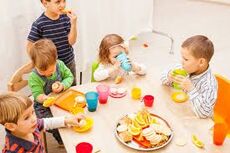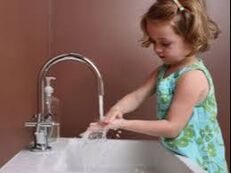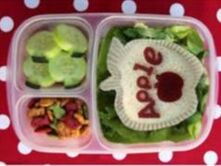Hand WashingChildren are ready to learn about hand washing when they are still very young. Most children develop the ability to wash their hands independently by about three years of age.
|
Straw Drinking
Should your little one be using a sippy cup? Many professional says no for two reasons:
it is recommend starting to practice with a straw cup at 10 months of age. "Focus on providing it at meals with water due to the mess. Once they do well, you can add milk," she said. Wood said that for proper speech development, "Children should begin transitioning away from a bottle at 12 months, and a great next step is a straw cup." |
Snacking
Ever wondered how moms really get their kids to eat their veggies? We asked several moms what they do to make sure veggies are a part of their kids’ diets every day. We hope you’ll try some of these real life solutions during your next meal or snack time!
|




